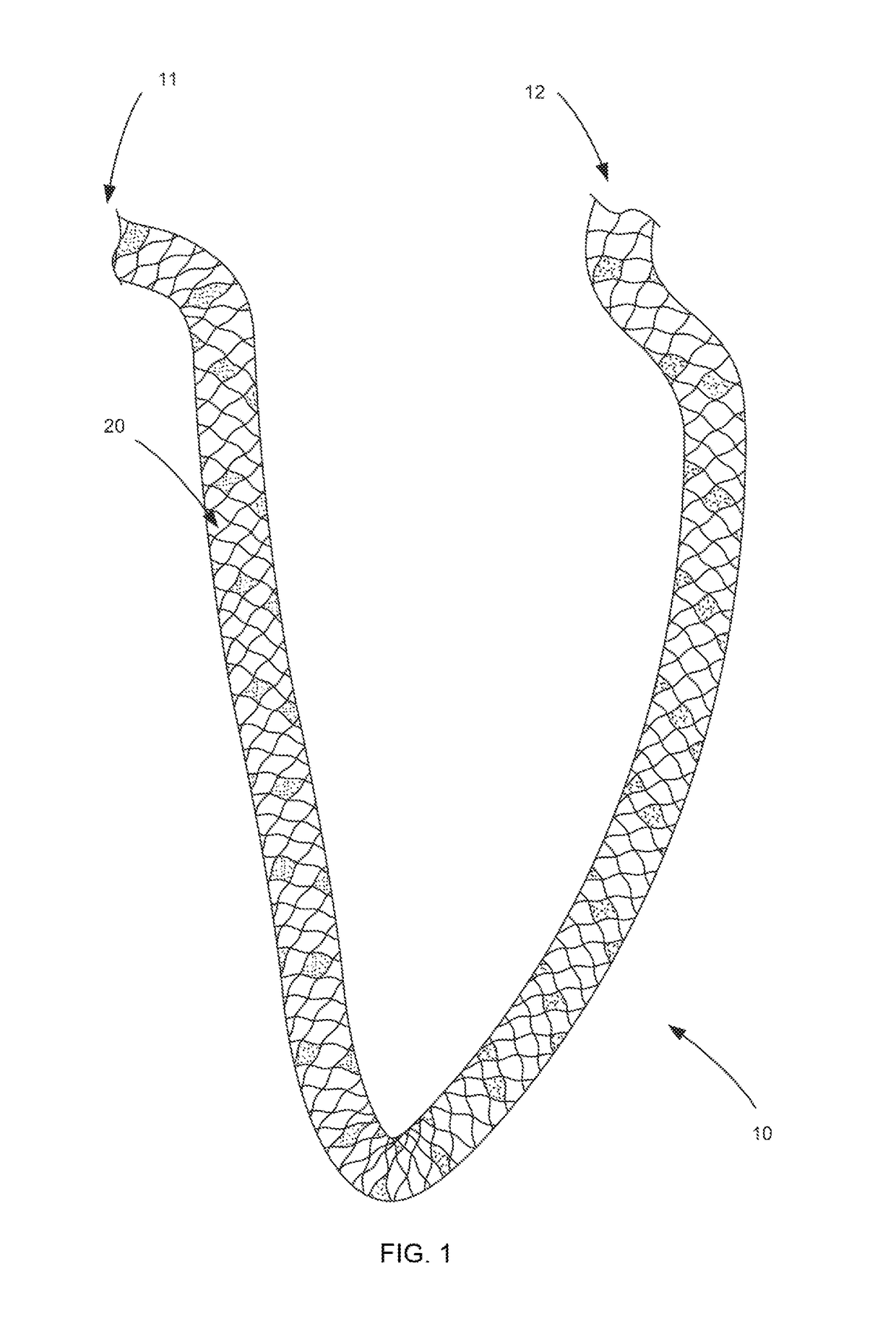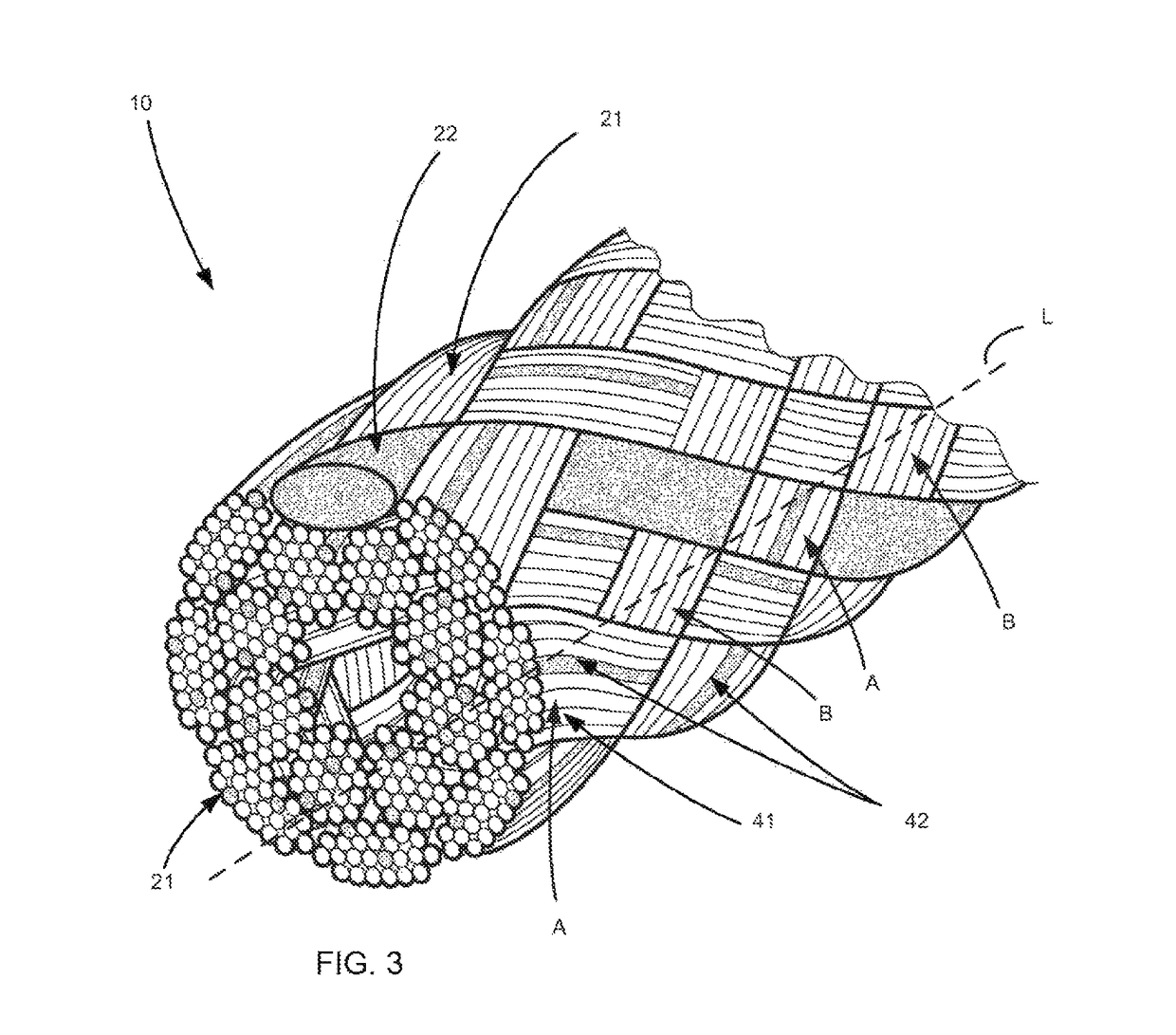Braided filament with particularized strand compositions and methods of manufacturing and using same
a technology of particularized strands and filaments, which is applied in the direction of braids, ligaments, surgery, etc., can solve the problems of less adept in knotting, difficulty in tying, and the type of fiber chosen for its performance characteristics can at the same time have an adverse impact in other ways
- Summary
- Abstract
- Description
- Claims
- Application Information
AI Technical Summary
Benefits of technology
Problems solved by technology
Method used
Image
Examples
Embodiment Construction
[0020]The various structures, devices, assemblies, and associated methods of use, manufacture and assembly, of the present invention are intended for use in the repair, reattachment, replacement or otherwise securement of tissue. This includes both hard tissue and soft tissue. Soft tissue may be, for example, meniscus, cartilage, capsule, ligaments and tendons, replacement grafts of any of these soft tissue, or the like. Hard tissue is considered to be bone. While many of the exemplary embodiments disclosed herein are directed towards the ultimate use of the filament structures as a tissue anchor for implantation into a bone tunnel, such as in anterior cruciate ligament (ACL) replacement and repair, other uses are also envisioned. As used herein, “proximal” or “proximally” means closer to or towards an operator, e.g., surgeon, while “distal” or “distally” means further from or away from the operator.
[0021]The term braid as used throughout is intended to refer generally to a pattern ...
PUM
| Property | Measurement | Unit |
|---|---|---|
| Weight | aaaaa | aaaaa |
| Molecular weight | aaaaa | aaaaa |
Abstract
Description
Claims
Application Information
 Login to View More
Login to View More - R&D
- Intellectual Property
- Life Sciences
- Materials
- Tech Scout
- Unparalleled Data Quality
- Higher Quality Content
- 60% Fewer Hallucinations
Browse by: Latest US Patents, China's latest patents, Technical Efficacy Thesaurus, Application Domain, Technology Topic, Popular Technical Reports.
© 2025 PatSnap. All rights reserved.Legal|Privacy policy|Modern Slavery Act Transparency Statement|Sitemap|About US| Contact US: help@patsnap.com



